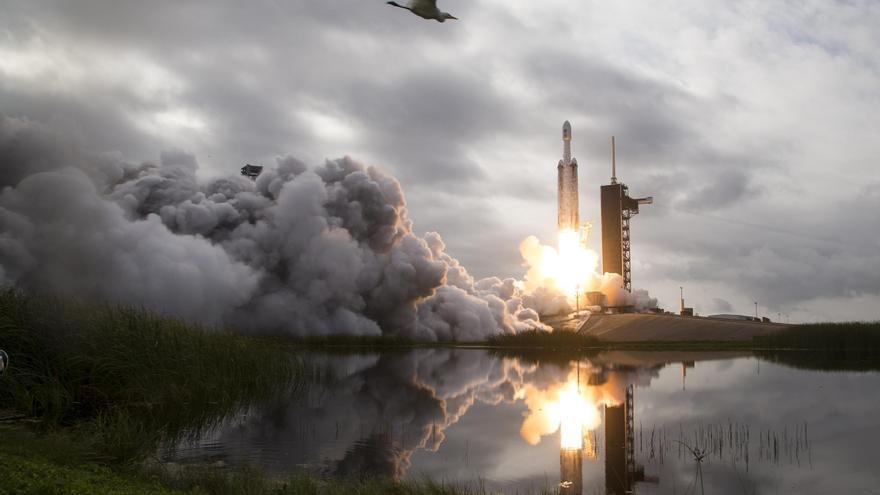NASA’s Psyche mission is already on its way to the metallic asteroid that bears its name, which will begin orbiting in August 2029 to collect information about the planet’s composition and test new space technologies.
Related
the mission spirit NASA, which aims to study a metallic asteroid of the same name, has already begun its journey into deep space. Because it rotates at a different speed than Earth, the distance between our planet and Psyche ranges between 300 and 600 million kilometers.
The Psyche spacecraft successfully lifted off on Friday, October 13, 2023 aboard a SpaceX Falcon Heavy rocket from NASA’s Kennedy Space Center in Florida.
The spacecraft also carries on board a new optical communications technology called Deep Space Optical Communications (DSOC), which will test laser communications beyond the Moon.
“Congratulations to the Psyche team on a successful launch, the first flight to a metal-rich asteroid,” NASA Administrator Bill Nelson said in a statement. launch.
“The Psyche mission could provide humanity with new information about planetary formation, while also testing technology that could be used on future NASA missions. As asteroids continue to fall, NASA’s commitment to exploring the unknown and unknown is also growing.” “Inspiring the world through discovery,” he added.
Scheduled safe mode
Less than five minutes after liftoff, once the rocket’s second stage reached a high enough altitude, the fairings separated from the rocket and returned to Earth. About an hour after launch, the spacecraft separated from the rocket and observers on Earth waited for a signal from the spacecraft.
Soon after, the Psyche spacecraft was placed in planned safe mode, performing only minimal engineering activities while awaiting further orders from mission controllers on Earth.
Psyche established two-way communication at 11:50 a.m. EDT with NASA’s Deep Space Network (DSN) complex in Canberra, Australia. Initial telemetry reports show that the spacecraft is in good condition.
“I’m excited to see the scientific treasure Psyche will unlock as NASA’s first mission to a metallic world,” said Nicola Fox, associate administrator for NASA’s Science Mission Directorate in Washington.
He added: “By studying the asteroid Psyche, we hope to better understand our world and our place in it, especially with regard to the mysterious and inaccessible metallic core of our planet Earth.”
Meeting in August 2029
By August 2029, the spacecraft will begin orbiting the 279-kilometre-wide asteroid, the only metallic asteroid ever explored.
Because of the high metal content (iron and nickel) of Psyche, scientists believe it may be the partial core of a young planet, a building block for an early planet.
By studying this type of metallic world, scientists hope to learn more about the formation of rocky planets, including Earth.
DSOC will use the Modified Optical Telescope (MOT) to send data from the spacecraft to a ground-based receiver at Mount Palomar Observatory in California.
MOT is a device that modulates laser light using digital data and directs it toward a receiver. The ground-based receiver will use a specialized camera called a superconducting nanowire single photon detector (SNSPD) to capture single photons from the laser and convert them into electrical signals⁷.
Scientific power
DSOC aims to demonstrate its ability to achieve a data rate 10 to 100 times higher than traditional wireless communications. This would allow more scientific information to be sent from space missions, as well as high-resolution images and videos. DSOC can also improve the security and reliability of space communications, since laser light is less susceptible to interference than radio waves⁷.
DSOC is one of four science instruments carried by the Psyche spacecraft. The other devices are magnetometer, gamma and neutron spectrometer, and multispectral imaging. The Psyche mission is led by Arizona State University. JPL is responsible for mission management, operations and navigation. The spacecraft’s solar and electrical propulsion structure will be built by Maxar (formerly SSL).





:format(jpeg):focal(1315x1095:1325x1085)/cloudfront-us-east-1.images.arcpublishing.com/gfrmedia/73FB3C5QPNHUDDI46BYWFYBC5I.jpg)